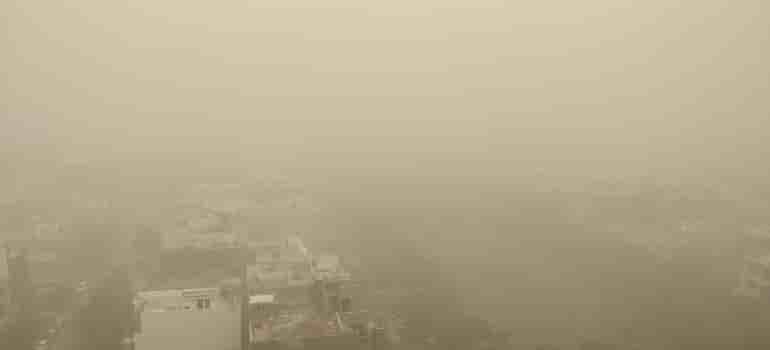AQI Dips to 306 Due to Stubble Burning and Firecrackers, Government Implements Action Plan
The air quality in the national capital, Delhi, and the NCR region has deteriorated to a ‘very poor’ category, with the Air Quality Index (AQI) reaching 306 on Monday. This decline is attributed to unfavorable meteorological conditions, as well as factors such as stubble burning in Punjab and firecrackers in NCR and Delhi. On Sunday, Delhi’s average AQI dropped to 313 from 248 on Saturday. The Central Pollution Control Board (CPCB) reported AQI figures, with Faridabad at 322 (very poor), Ghaziabad at 246 (poor), Greater Noida at 354 (very poor), Gurugram at 255 (poor), and Noida at 304 (very poor).
In response to this alarming situation, Delhi’s environment minister, Gopal Rai, will lead a meeting with relevant departments to discuss the implementation of pollution control measures under the central government’s plan. The India Meteorological Department (IMD) forecasts that the NCR’s air quality will remain “very poor” for the coming days due to decreasing temperatures and an increase in emissions from stubble burning. Moreover, instances of stubble burning in Haryana’s Karnal were reported on Sunday, with a total of 48 cases reported this season, leading to fines imposed on offending farmers.
The Decision Support System for Air Quality Management predicts a potential increase in paddy straw burning, with smoke from such burning contributing to 16% of Delhi’s PM2.5 pollution on Sunday, possibly rising to 30-32% on Monday. Additionally, the Commission for Air Quality Management (CAQM) sub-committee has initiated the 11-point action plan in Stage-II of the Graded Response Action Plan (GRAP) for the national capital region. This includes bans on coal and wood-fired stoves, increased frequency of CNG and electric buses, regular road cleaning, and traffic management to alleviate pollution.


